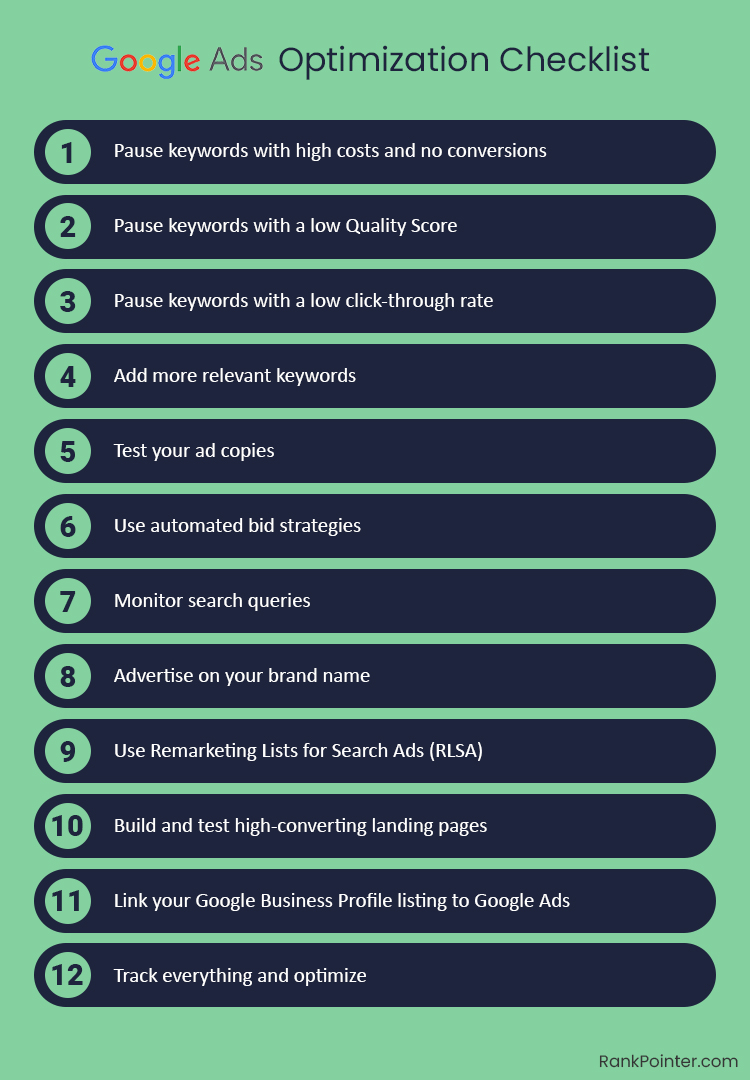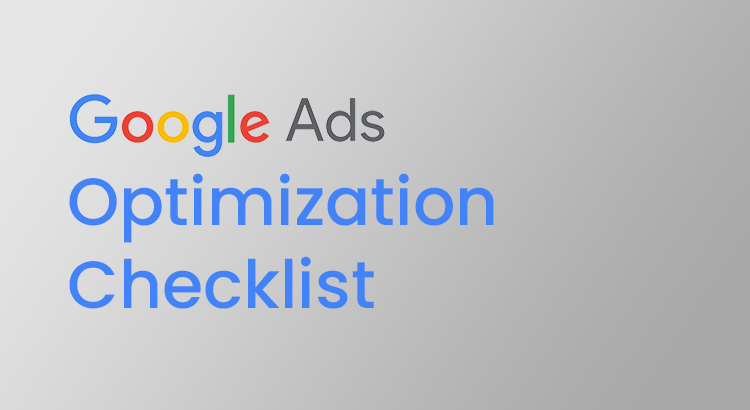Running a successful Google Ads campaign requires more than just setting it up and letting it run. Optimization is key to ensuring your ads reach the right audience, generate leads, and maximize ROI. To aid in this process, we present a comprehensive Google Ads optimization checklist, designed to enhance campaign performance while keeping your budget in check.
Google Ads Checklist
1. Pause keywords with high costs and no conversions
Start by reviewing your keyword data and identify those that are draining your budget without yielding conversions. Pause or remove keywords that consistently underperform to optimize your ad spend effectively.
Useful Article: Google Ads Negative Keywords: What They Are & How to Use Them
2. Pause keywords with a low Quality Score
Quality Score plays a crucial role in determining ad rank and cost-per-click. Pause keywords with low Quality Scores, as they can negatively impact your campaign’s performance.
Focus on optimizing keywords with higher Quality Scores to improve overall campaign effectiveness.
3. Pause keywords with a low click-through rate
A low click-through rate indicates poor ad relevance or targeting. Identify keywords with low CTRs and no conversions, and consider pausing them to improve campaign performance.
Focus on crafting compelling ad copy and targeting relevant keywords to boost CTRs.
4. Add more relevant keywords
Expanding your keyword list increases your campaign’s reach and potential for conversions. Focus on adding relevant keywords related to your products or services.
Utilize tools like keyword planners to identify new keyword opportunities and expand your campaign’s reach.
5. Test your ad copies
A/B testing your ad copies allows you to optimize for higher click-through rates and conversions.
Experiment with different ad variations and elements such as headlines, descriptions, and call-to-actions to identify the most effective messaging for your audience.
6. Use automated bid strategies
Automated bid strategies leverage Google’s algorithms to optimize keyword bids for better performance
Utilize bid strategies like target CPA or target ROAS to maximize conversions while minimizing costs. Regularly monitor and adjust bid strategies to align with campaign goals.
7. Monitor search queries
Regularly review search query reports to identify irrelevant search queries triggering your ads. Add negative keywords to filter out irrelevant traffic and improve ad targeting.
By refining your keyword list, you can ensure your ads are reaching the most relevant audience.
8. Advertise on your brand name
Advertising on branded keywords can improve ad relevance and lower costs. Utilize branded keywords to capture users already familiar with your brand and increase brand visibility in search results.
Leverage the higher Quality Scores associated with branded keywords to improve overall campaign performance.
9. Use Remarketing Lists for Search Ads (RLSA)
Target users who have previously visited your site with remarketing lists for search ads. Tailor ad messaging and bidding strategies to re-engage with these users and drive conversions.
RLSA allows for more aggressive targeting and bidding for users already familiar with your brand.
10. Build and test high-converting landing pages
Optimize landing pages for better conversion rates by focusing on relevance and usability. Create PPC-specific landing pages with compelling headlines, clear call-to-actions, and relevant content.
Test different elements of your landing pages to identify what resonates best with your audience.
11. Link your Google Business Profile listing to Google Ads
Integrate your Google Business Profile listing with Google Ads to enhance local visibility and attract relevant search traffic.
Promote your Google Maps listing through ads to capture local intent and drive foot traffic to your business. Utilize the free features of Google My Business to enhance your online presence and improve ad performance.
12. Track everything and optimize
Take advantage of Google Ads’ robust tracking capabilities to monitor campaign performance at every level. Analyze data on impressions, clicks, conversions, and costs to identify areas for improvement.
Continuously optimize your campaigns based on insights gleaned from tracking data to maximize ROI.

Conclusion of Google Ads Optimization Checklist
Effective Google Ads campaigns require continuous optimization and refinement. By implementing the strategies outlined in this checklist, businesses can improve ad performance, increase conversions, and achieve a higher return on investment.


